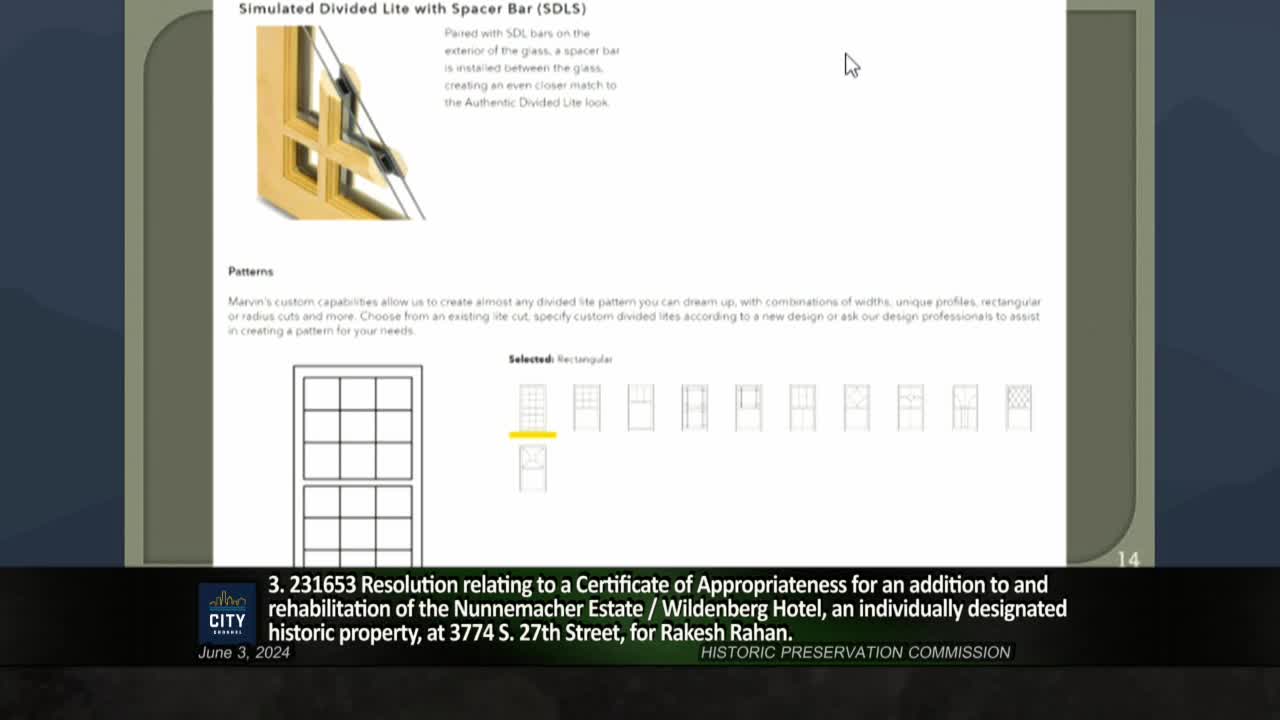Historic Home Renovation Sparks Controversy Over Design Choices
June 03, 2024 | Milwaukee , Milwaukee County, Wisconsin

This article was created by AI summarizing key points discussed. AI makes mistakes, so for full details and context, please refer to the video of the full meeting. Please report any errors so we can fix them. Report an error »

In a recent government meeting, officials approved several significant architectural modifications aimed at preserving the historical integrity of local buildings while allowing for modern enhancements.
The first major discussion centered on a project involving the addition of new construction to an existing structure. Officials noted that the project had previously faced challenges but had resolved all issues related to the site plan. The commission emphasized the need for differentiation between the original building and the new addition, suggesting the use of new brick materials to visually distinguish the two. This approach aligns with preservation standards that require new construction to be clearly identifiable as distinct from older structures.
The discussion also highlighted the rejection of preservation tax credits for the project, attributed to state-level complications rather than design flaws. The commission expressed frustration over the state's stance, which included unexpected comments regarding the project's historical context. Despite these setbacks, the commission moved forward with the approval, contingent on the submission of a complete materials list and further detailing on the front patio.
In another item, the commission reviewed modifications to a previously approved window plan for a building in the Mitchell Street Historic District. The architect proposed replicating the original window design, reducing the number from five to three, which was met with unanimous approval from the commission.
Additionally, a proposal for a rear addition and exterior staircase replacement at a Tudor-style home in the North Point Historic District was discussed. The applicants aim to replace a poorly constructed porch with a new design inspired by the original architecture, while also repairing 42 windows with new wood storm windows. The commission recognized the importance of maintaining the building's historical character while allowing for necessary updates.
Overall, the meeting underscored the balance between preserving historical architecture and accommodating modern needs, with officials committed to ensuring that new developments respect the visual and historical context of the community.
The first major discussion centered on a project involving the addition of new construction to an existing structure. Officials noted that the project had previously faced challenges but had resolved all issues related to the site plan. The commission emphasized the need for differentiation between the original building and the new addition, suggesting the use of new brick materials to visually distinguish the two. This approach aligns with preservation standards that require new construction to be clearly identifiable as distinct from older structures.
The discussion also highlighted the rejection of preservation tax credits for the project, attributed to state-level complications rather than design flaws. The commission expressed frustration over the state's stance, which included unexpected comments regarding the project's historical context. Despite these setbacks, the commission moved forward with the approval, contingent on the submission of a complete materials list and further detailing on the front patio.
In another item, the commission reviewed modifications to a previously approved window plan for a building in the Mitchell Street Historic District. The architect proposed replicating the original window design, reducing the number from five to three, which was met with unanimous approval from the commission.
Additionally, a proposal for a rear addition and exterior staircase replacement at a Tudor-style home in the North Point Historic District was discussed. The applicants aim to replace a poorly constructed porch with a new design inspired by the original architecture, while also repairing 42 windows with new wood storm windows. The commission recognized the importance of maintaining the building's historical character while allowing for necessary updates.
Overall, the meeting underscored the balance between preserving historical architecture and accommodating modern needs, with officials committed to ensuring that new developments respect the visual and historical context of the community.
View full meeting
This article is based on a recent meeting—watch the full video and explore the complete transcript for deeper insights into the discussion.
View full meeting
